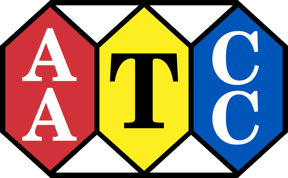Description
TEST METHODS ARE DELIVERED AS A LINK IN YOUR EMAILED RECEIPT.
AATCC TM98-2022, Alkali in Bleach Baths Containing Hydrogen Peroxide
1. Purpose and Scope
1.1 This test method determines the total alkali content of a bleach bath containing hydrogen peroxide and alkali from any source. The total alkali content is expressed as % sodium hydroxide.
1.2 Alkali in bleach baths may be supplied by sodium hydroxide, sodium silicate, sodium carbonate, or by various other alkaline materials, including potassium compounds, ammonia, lime, or by peroxygen solids which contain alkaline salts.
1.3 The alkali content of a bleach bath is a critical parameter in determining the rate and extent to which the textile being bleached is affected by the bleaching process.
1.4 This test method is used for laboratory determinations and for process control.
2. Principle
2.1 A weighed specimen of the bleach bath is titrated with a standardized solution of sulfuric acid to a Phenol Red endpoint, or to the pH range 6.8-8.4 on a pH meter. The total alkali, expressed as % NaOH, is calculated based on the weight of the bath.
Copyright American Association of Textile Chemists and Colorists, RTP, NC, USA. All rights reserved.
The above information is only a summary of the AATCC test method
English
Spanish
Hindi
Chinese (Simplified)
Chinese (Traditional)
Japanese
Bengali
Korean
Telugu
Marathi
Punjabi
French
Polish
Arabic
Danish
Dutch
Persian
Portuguese
Latin
Vietnamese
Hebrew
Hungarian
Indonesian
Irish
Italian
Kannada
Mongolian
Romanian
Russian
Norwegian
Serbian
Sindhi
Swedish
Tamil
Turkish
Ukrainian
Urdu
